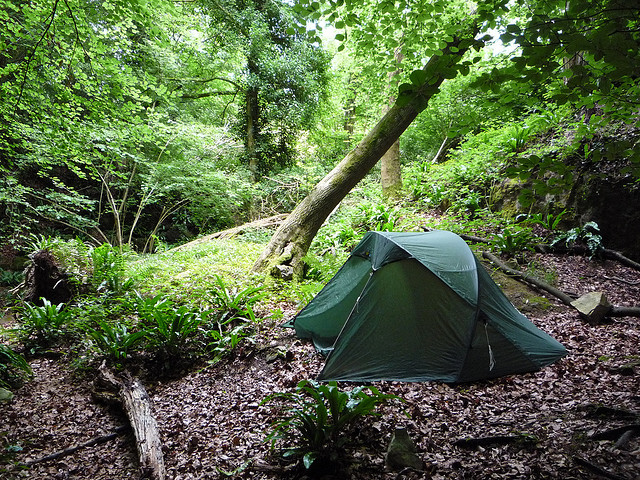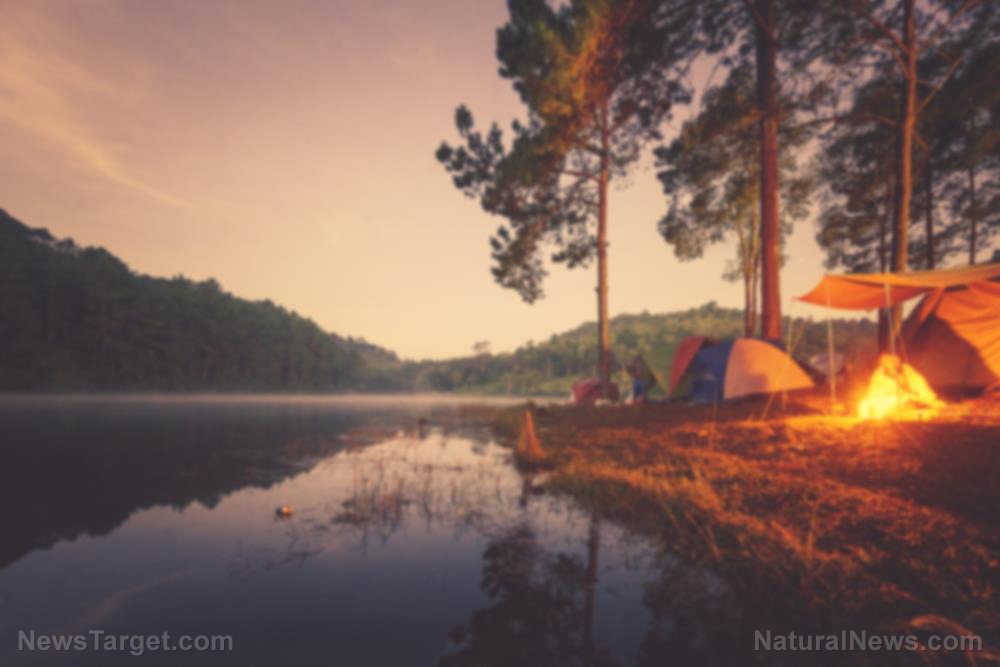10 Basic tips for wilderness and urban stealth camping
01/17/2023 / By Olivia Cook

The ultimate goal of stealth camping is to spend the night in a location without anyone taking notice. Stealth camping can be done with a bicycle and pack, a tent and sleeping bag or in a vehicle.
Here are 10 basic tips for backpackers who want to venture into setting up camp at wilderness sites or forested areas in the backcountry and for people who travel in vehicles and want to try some city stealth camping.
Wilderness stealth camping
Make sure to check your local forest bureau to find out the areas that allow people to camp in the woods at unmarked locations. Avoid campsites that require reservations or permits that may cost money. Many places have trespassing laws that limit where you can set up camp.
Get some good stealth camping gear
Use tents and outdoor equipment, which blend in with the foliage around you to help you stay undetected – if other campers/backpackers or forest rangers were to drive or hike by.
To minimize what you need to carry and the total cost of your gear, consider only going on stealth camping adventures during temperate weather.
Consider sleeping under the stars. Not setting up a tent or a hammock makes for a speedy getaway in the morning.
Choose a stealth camping spot (ideally a quiet location)
Camp away from any nearby roads, trails or well-trodden paths if you don’t want to be detected. If you’re up high, you’ll be able to see people before they see you. When you’re focusing on blending in, try not to find a spot with a scenic view because chances are, other people will try to claim that spot as well.
Setting up camp by a river is also not a good idea because there are hazards to worry about. The river could rise in the morning or other people and animals might stop by the river to look for water and food.
Setting camp inside a large gate or fence could mean bad news. If you have to run for something or someone in the middle of the night, having to climb a large gate or fence could be the difference between life and death or prison.
Leave in the early morning. Set your alarm on vibrate and keep it on so you can wake up at a decent time. Pack up quickly and move out so you don’t get caught. If you do get caught, it is best to feign ignorance and offer to leave politely. If you are cooperative, well-behaved and respectful, you might get away with a “slap on the wrist” instead of a fine or even jail time.
Leave no trace
This means keeping your impact on the area to a minimum and reducing the damage you do with the land. Leave the area cleaner than when you found it before. Dispose of your waste properly. Remember to bring along a large zippable plastic bag to store all your trash, keep it contained and limit its smell.
If you forgot to bring any, bury your waste six to eight inches deep and at least 200 feet or more from any water source. This 200-foot guideline is in place to help keep the water clean and free of contaminants.
Cover your tracks, hide footprints or bicycle tracks. Set up your campsite just before dark.
If you can help it, don’t start a campfire. Campfires and smoke attract people and even some animals.
Pack the appropriate emergency kits
If you’re backpacking, every ounce might matter, but remember that you are the only person who knows where you are. Think and anticipate the dangers which might be lurking in the area you want to stay in – wild animals you should watch for, uneven terrain, etc.
There are many “general” first aid kits you can buy in outdoor gear shops or army surplus stores, so look for or customize one specific to outdoor injuries or incidents. (Related: Prepping checklist: Camping essentials to pack in your survival bag.)
You might want to consider telling someone you trust exactly where you’re heading or exactly where you are setting camp.
Learn basic survival skills
Survival techniques are plentiful, but there are basic survival skills that everyone who ventures into the outdoors should understand, learn and be fully aware of – navigation (reading maps and compasses), fire starting, tying knots, creating a survival shelter, signaling, foraging for food and water from natural resources and survival first aid. (Related: 10 must-have camping tools that can teach your kids survival skills.)
Urban stealth camping
Choose the right vehicle for the job
Go for a standard cargo van in white that won’t stand out because you want to be “invisible” and forgettable. You can try a box truck or a construction vehicle that can be parked discreetly and will hide well in urban areas.
Consider building your own adventure van
Before you decide to customize your own adventure vehicle, consider what you’re going to use it for – urban or forest/wilderness camping, snow or sun, terrain it will be driving on, equipment you will need to carry and how many people will be with you.
Show up late and leave early
Park when you are ready to go to bed and stay in that spot when you are sleeping. Eat dinner somewhere else. Cover your windows with something dark and inconspicuous. Set an alarm and get up early to start your day.
Keep your vehicle clean
Most people don’t mind seeing a clean vehicle because they are less of an eyesore parked on the street.
Rotate parking locations regularly
Avoid using the same location two nights in a row. If you’re likely to stay in a city for a long time, try to map out around 10 different locations If you’re caught in one area, cross that one off the list. Make a note of places where there are 24-hour businesses.
Visit BugOut.news for more stories like this.
Watch the following video about the 10 best places to sleep on the road while urban stealth camping.
This video is from the Emily Windsor, Truth or Dogma channel on Brighteon.com.
More related stories:
Camping: A great way to practice how to live after SHTF.
Essential supplies to pack in your first aid kit for a camping trip.
10 essential outdoor skills that will help you survive when SHTF.
Sources include:
Submit a correction >>
Tagged Under:
bug out, camping, hiking, off grid, outdoor adventure, preparedness, prepper, prepping, stealth camping, survival, survival skills, tips, urban stealth camping, wilderness stealth camping
This article may contain statements that reflect the opinion of the author
RECENT NEWS & ARTICLES
COPYRIGHT © 2017 PREPAREDNESS NEWS




















